Not long ago, Soomal evaluated the Sony XBA-A2 three-unit iron earphone. The high-frequency performance of its moving iron unit is impressive. As a 1000 yuan-class earphone, the high-frequency performance of the moving iron unit is no longer familiar than ours. The treble performance on the W4R, UE900 and other headphones. And as the current Sony earphones flagship XBA-Z5, on the moving iron and dynamic speaker unit is different than A2. Its sound performance is also worth looking forward to. Thank you friends Send XBA-Z5 headphones, the current Z5 headphones Sonystyle official website is priced at 3,699 yuan, online shopping prices are around 2,700 yuan.
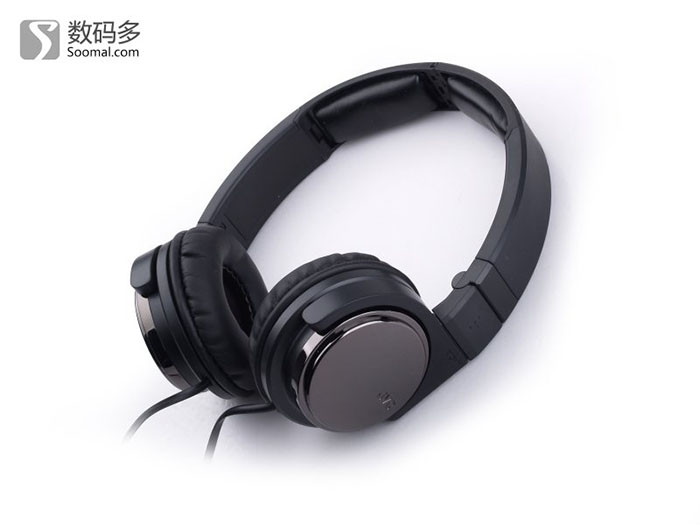
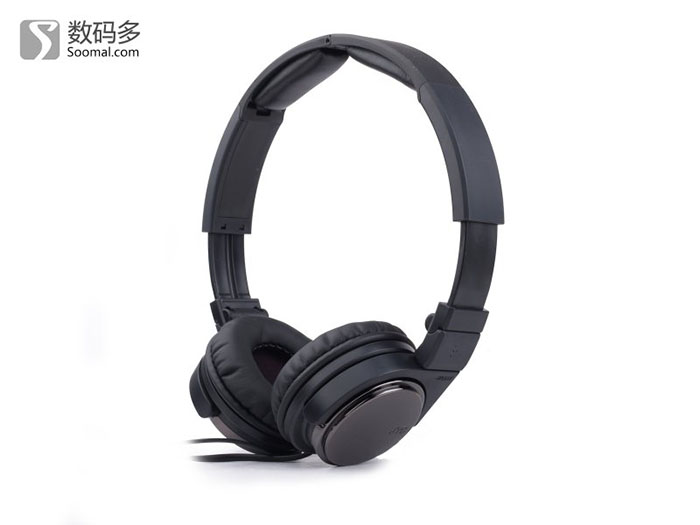 In the XBA-A1 and A2 evaluations before Soomal, we have introduced that at the end of 2014, Sony released the XBA-A1, A2, A3 and Z5 product configuration differences. In addition to A1 using a full-band moving iron unit, A2, A3 Both the Z5 and the Z5 use two moving iron units. Inside the moving iron unit, the T-shaped armature and the integrated structure between the diaphragm and the armature, the main structure of the opening position of the diaphragm facing the side is the same. However, In the official introduction, the moving iron unit diaphragm material used by Z5 is different from A2 and A3. Z5 uses magnesia metal material to make the diaphragm achieve lighter weight. The overall casing of Z5 is different from A series, the official introduction is the same. Magnesium metal is used. This material and shell surface coating process looks somewhat similar to the Sony Z7 headphones.
In the XBA-A1 and A2 evaluations before Soomal, we have introduced that at the end of 2014, Sony released the XBA-A1, A2, A3 and Z5 product configuration differences. In addition to A1 using a full-band moving iron unit, A2, A3 Both the Z5 and the Z5 use two moving iron units. Inside the moving iron unit, the T-shaped armature and the integrated structure between the diaphragm and the armature, the main structure of the opening position of the diaphragm facing the side is the same. However, In the official introduction, the moving iron unit diaphragm material used by Z5 is different from A2 and A3. Z5 uses magnesia metal material to make the diaphragm achieve lighter weight. The overall casing of Z5 is different from A series, the official introduction is the same. Magnesium metal is used. This material and shell surface coating process looks somewhat similar to the Sony Z7 headphones.
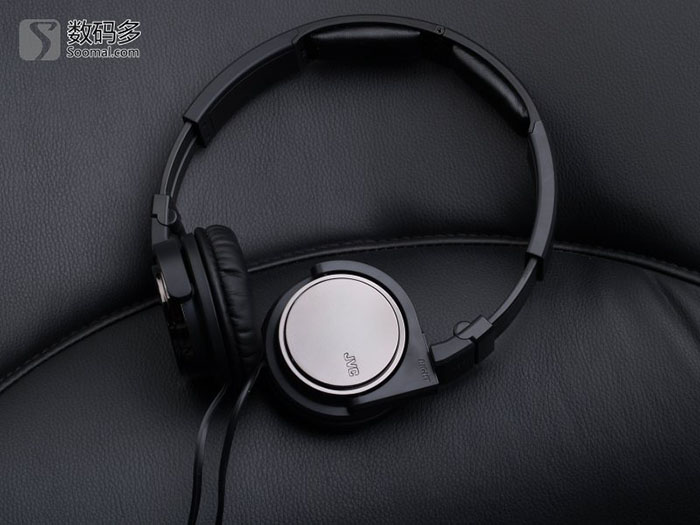
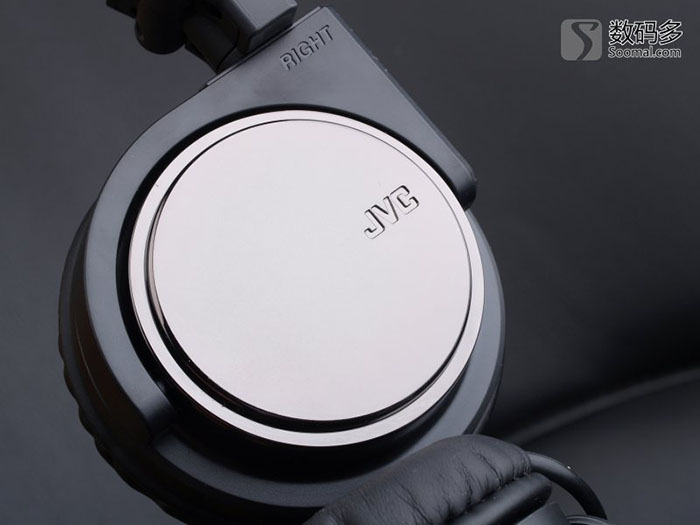
 The two-unit moving iron unit is also the same for the full frequency band, and the other is responsible for the high frequency. In the Z5, the RC capacitor circuit is officially built. In the moving coil unit, both the A3 and the Z5 use a 16mm diameter large vibration. The film [A2 is 12mm diameter, A3 is 16mm diameter], the material is the LCP liquid crystal polymer material commonly used by Sony in recent years, but the difference between Z5 and A3 is that the surface is coated with aluminum, and the wrinkle reinforcement of the edge of the diaphragm is increased. The rigidity of the diaphragm can theoretically make the low frequency easier to control.
The two-unit moving iron unit is also the same for the full frequency band, and the other is responsible for the high frequency. In the Z5, the RC capacitor circuit is officially built. In the moving coil unit, both the A3 and the Z5 use a 16mm diameter large vibration. The film [A2 is 12mm diameter, A3 is 16mm diameter], the material is the LCP liquid crystal polymer material commonly used by Sony in recent years, but the difference between Z5 and A3 is that the surface is coated with aluminum, and the wrinkle reinforcement of the edge of the diaphragm is increased. The rigidity of the diaphragm can theoretically make the low frequency easier to control.

 On the official page of the Sony Z5, you can also see Sony's internal structure diagram of "Rhythm Response Control". There is a special structure in the earphone housing on the back of the moving coil speaker to adjust the internal airflow. This is the tuning of the small earbuds. It is very important, and it is more important to design the airflow system to ensure mass production and consistency. The above pictures are from the official website of Sony. The moving iron structure, the distribution position of three speakers, and the rhythm response control. There should be no difference between A2 and A3. The biggest difference of Z5 is the difference of moving diaphragm, the difference of moving iron diaphragm, the material of the earphone casing [may affect the structure of the rhythm response control], and possibly the frequency dividing circuit. Join.
On the official page of the Sony Z5, you can also see Sony's internal structure diagram of "Rhythm Response Control". There is a special structure in the earphone housing on the back of the moving coil speaker to adjust the internal airflow. This is the tuning of the small earbuds. It is very important, and it is more important to design the airflow system to ensure mass production and consistency. The above pictures are from the official website of Sony. The moving iron structure, the distribution position of three speakers, and the rhythm response control. There should be no difference between A2 and A3. The biggest difference of Z5 is the difference of moving diaphragm, the difference of moving iron diaphragm, the material of the earphone casing [may affect the structure of the rhythm response control], and possibly the frequency dividing circuit. Join.
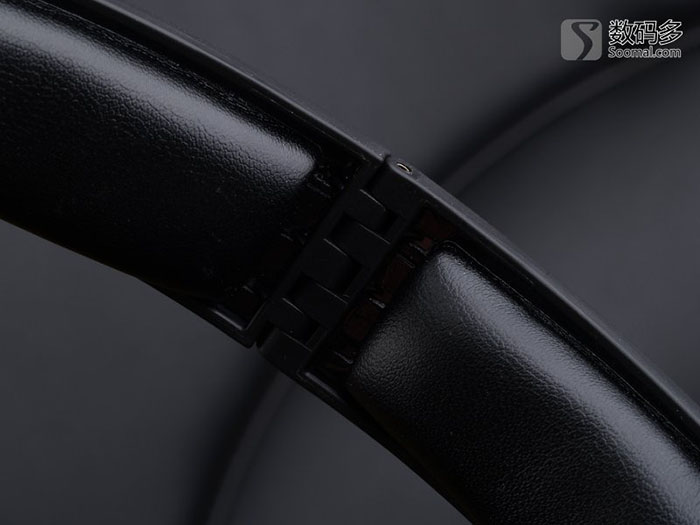 From the point of wearing, the XBA-Z5 and the A series are similar. We only have the XBA-A2 as a reference. Although the speaker unit and the size of the Z5 are larger than the A2, it still maintains a weight of about 11 grams. [A2 is 9g], the actual use basically does not feel the difference, probably because the wearing comfort and weight have a greater relationship with the wire design. The standard wire of SONY is bigger than the A series in the connection with the earphone. In the case of curvature, it is still recommended to wear the upper wire around the ear when wearing it.
From the point of wearing, the XBA-Z5 and the A series are similar. We only have the XBA-A2 as a reference. Although the speaker unit and the size of the Z5 are larger than the A2, it still maintains a weight of about 11 grams. [A2 is 9g], the actual use basically does not feel the difference, probably because the wearing comfort and weight have a greater relationship with the wire design. The standard wire of SONY is bigger than the A series in the connection with the earphone. In the case of curvature, it is still recommended to wear the upper wire around the ear when wearing it.
Since the test users have used the headphones very fully, we have done a simple 50-hour warm-up on the Z5. The test comparison headphones use the Westone Weston W60, Sony XBA-A2 and Aurvana Air as a simple reference. Play Use Sony ZX2, enjoy sound M2 Pro and fly proud X7+AM2, vivo X6 Plus, and iPhone 6s as a mobile phone reference.
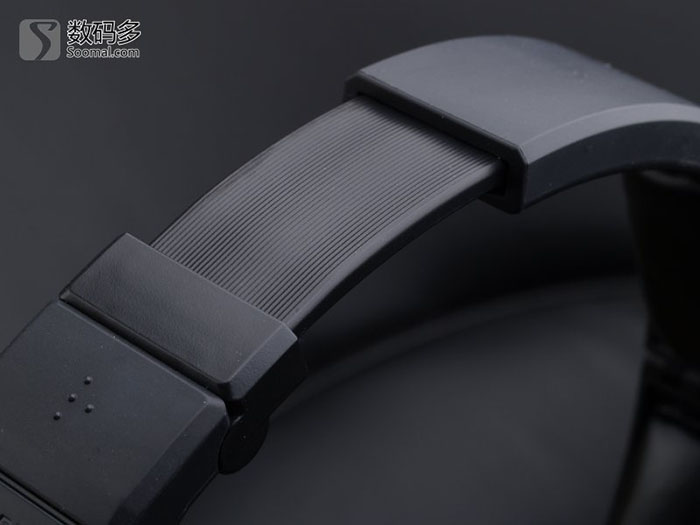 Overall impression: The high-frequency performance of the Sony XBA-Z5 is indeed impressive, although the high-frequency performance of the XBA-A2 has made us ready for the high-frequency boost of the Z5, but the high-frequency sense of the Z5 and the fast The transient response is still somewhat surprising. On the contrary, the sense of the low-frequency part is still somewhat slow. The mid-frequency vocal performance is significantly improved compared with A2, but the style is still relatively backward. The sound is slightly softer.
Overall impression: The high-frequency performance of the Sony XBA-Z5 is indeed impressive, although the high-frequency performance of the XBA-A2 has made us ready for the high-frequency boost of the Z5, but the high-frequency sense of the Z5 and the fast The transient response is still somewhat surprising. On the contrary, the sense of the low-frequency part is still somewhat slow. The mid-frequency vocal performance is significantly improved compared with A2, but the style is still relatively backward. The sound is slightly softer.
High-frequency performance: Sony XBA-Z5's double-action iron unit specifically emphasizes the use of a lightweight magnesium alloy diaphragm in the official data, and also uses the "HD unit". The high frequency performance of the Z5 is indeed excellent. Compared with the best Weir's moving iron unit we have heard in W60, the overall quality is in a leading position in all aspects [compared to the Datonic multi-unit flagship that I have heard before, it should be a large lead) .
The extremely high frequency part of the Z5 responds quickly and the space is very good. In the earphones, the earphones can reach the high frequency. The earphones with such a good sense of space have not been encountered before the Z5. Compared with the earphones Aurvana Air, this kind of earphones The sense of space Z5 may be even better, of course, the degree of detail is definitely better for Z5. This is in the performance of some very high frequencies of violin, higher high frequency of percussion and some sounds that are specially made to imitate fast percussion. The Z5's agility and speed, very good resolution are far beyond the W60. If you have a very quiet environment to enjoy music, Z5's advantages in this area will be more obvious.
The large advantage of transient and resolving power will make the overall high-frequency hearing of Z5 better than W60. The overtone of violin is rich and gorgeous, the transparency of brass music is obviously improved, the sense of space and air of percussion are The level is obviously enhanced. This kind of resolving power and fast transients do not show a hard feeling of birth [this does not have to be questioned, the moving iron in the W4R era can already be done]. And the overall high frequency level of the Z5 is clear and the sound is clean. In a slightly larger dynamic, there is a relatively softer side of all moving iron units. Overall, the high frequency of the XBA-Z5 belongs to the best level of the current small headphones. From Z5 to W60, the sound level drops. Level, transient response is a bit confusing.
Of course, excellent high frequency needs to be matched with relatively advanced audio sources, especially advanced music programs, otherwise the high frequency will be slightly harder. Unless you are not demanding, then the iPhone is not impossible. Overall, the adaptability of Z5 Not bad, the high frequency performance of the sound sources we use is definitely different due to different sound sources, but it will not have much problem.
IF performance: From Sony's Z7, to A1 and A2 headphones, Sony's balanced mid-range and mid-low frequency performance seems to be inconsistent with Westone and AKG's high-end headphones. Z7 huge diaphragm And the closed design may be a reason, and whether the "circle iron" can be adjusted is also a technical difficulty. Compared with A2 [has not heard of A3], the XBA-Z5's mid-range vocal performance has been full and thick, such an intermediate frequency The dynamics and thickness are better than the W4R four-unit moving iron headphones, and its IF thickness is still slightly worse than the W60.
As the "flagship" requirements, the Z5's IF and W60's IF are not perfect, each has its own problems. The W60's IF thickness is better, the dynamics are slightly better with the Z5, but the sound in the mid-low frequency part seems a bit awkward. On the Walkman player [even X7 AM2] is poorly controlled, the voice of the vocals is slightly buzzing. The Z5's IF seems to be slightly softer than a little bit [the IF with X6Plus is better than the Flying AX7], The dynamic is slightly weaker. In the middle and high frequency part, the fineness and resolution of the Z5 is still very good. The resolving power and soft listening feeling make you not believe that this comes from the moving iron unit. The strength of the mature male voice is relatively lacking. In the symphony and other performances, the basic trend is the same. In general, the softness and lack of strength are insufficient. The middle and low frequency levels and control are better than W60. The medium and high frequency is obviously better than W60. The medium frequency dynamic is weaker than W60. The sound thickness and strength are weaker than W60. .
Low frequency performance: Z5 uses a 16mm diameter liquid crystal polymer material diaphragm, and has aluminized coating, more pleat stiffeners. However, regardless of Sony's ZX2 or with the fly proud X7, Z5's low frequency sense is still relatively biased More, the speed is slightly slower. Its advantage is because the size of the diaphragm is obviously increased, and the depth of the low-frequency dive has been significantly improved. In such a low-frequency lower limit, as long as the sound pressure is not too large [such as the ghost Taigu seat - fast walking At the end of a low frequency], such resolution is still very amazing. But for the high frequency of fast sound pressure, the low frequency transient speed of Z5 is still slow, the sound is slightly faint, can not keep up with the rhythm. Of course, with the same high The standard requires W60, and its low-frequency resolution is not too good. Taking the drums in "Ghost Taigu-Scatter" as a reference, the low-frequency advantage of moving iron is the strength and cohesion of drumming, but the level after stretching is very false. The Z5's drumming is generally cohesive, but the details of the drumhead vibration are more abundant. However, compared with the more advanced headphones and speakers, there is still a gap in the details. This is also the place where the small size speaker can't do the low frequency. .
In the middle and low frequency part of the cello performance, the Z5's detail advantage is still better than the W60. The sound stretch is slack, but the slack is a bit too slack. It is necessary to keep the sound source relatively neutral and good enough control. W60's mid-low frequency style and intermediate frequency Consistent, with good thickness and dynamic support, if the Z5 is used as a reference, the W60's mid-low frequency explosive force is stronger, the sound thickness is better, but the moving iron taste is somewhat prominent, the sound is slightly dull. Z5 low-frequency stretch relaxation The feeling is good for the overall listening, but the sense of the deeper part of the low-frequency dive is somewhat more, affecting its overall performance. And this too much low frequency is also not easy to control due to transients, so it also appears in popular music. A trace of budding.
Summary of sound performance: Sony XBA-Z5 is a kind of hybrid earphone with a sound and a sense of sound, and has excellent high-frequency performance and excellent sound field and space sense [in the earplugs]. Its dynamic iron advantage is fully exerted, undoubtedly. In the intermediate frequency and mid-low frequency part, the dynamic coil intervention is better than any previous ring iron headphones. In terms of higher requirements, the intermediate frequency thickness and dynamics are still insufficient. But the stretch and delicate state is also better than any previous ring iron headphones. The low-frequency part of Sony's taste is still slightly biased in the Z5 performance [compared to A2 obvious convergence], its low frequency has a good dive, but For the high requirements of the flagship headset, the level and transient control and overall performance are somewhat inconsistent, which may be the most obvious short board of this headset.
In terms of sound source matching, the Z5 is not particularly picky eaters, and can obtain significantly better intermediate frequencies on warm sound sources [eg vivo phones, music states, etc.], while the ZX2, X7 and MOJO can make the high-frequency sense of space play. Even better with the iPhone, the Z5's high-frequency advantage can also be expressed [also with the iPhone with the W60]. The Z5's mid-low frequency is easier to control under the ordinary sound source than the W60's mid-low frequency, but the intermediate frequency will be relatively It looks a little thin [also using the iPhone vs. W60].
to sum up
Although the sound performance of the Sony XBA-Z5 is not perfect, even the low frequency in the overall performance we think there are some suspicions, but in all dynamic and moving iron earplugs, the performance of the XBA-Z5 deserves the flagship status. Compared with the W60's 6-unit moving iron, although the dynamics of the intermediate frequency are still not dominant, the Z5 has already shown the advantage of the soft expansion of the moving coil unit in the "circle". The Sony's self-developed moving iron unit is in A. The series has already been played, and the Z5 top-level unit has led the use of the top model of the unit. For example, the W60. The details, transients, dynamics, sound field and rare softness of the upper part of the high-frequency part are obviously beyond the W60. The sense of space, sound field, and transient natural and rapid response are difficult to experience in the past earplugs. It is the ultimate performance of high frequency in small headphones.
Fiber Optical Splice Closure








Since the test users have used the headphones very fully, we have done a simple 50-hour warm-up on the Z5. The test comparison headphones use the Westone Weston W60, Sony XBA-A2 and Aurvana Air as a simple reference. Play Use Sony ZX2, enjoy sound M2 Pro and fly proud X7+AM2, vivo X6 Plus, and iPhone 6s as a mobile phone reference.

High-frequency performance: Sony XBA-Z5's double-action iron unit specifically emphasizes the use of a lightweight magnesium alloy diaphragm in the official data, and also uses the "HD unit". The high frequency performance of the Z5 is indeed excellent. Compared with the best Weir's moving iron unit we have heard in W60, the overall quality is in a leading position in all aspects [compared to the Datonic multi-unit flagship that I have heard before, it should be a large lead) .
The extremely high frequency part of the Z5 responds quickly and the space is very good. In the earphones, the earphones can reach the high frequency. The earphones with such a good sense of space have not been encountered before the Z5. Compared with the earphones Aurvana Air, this kind of earphones The sense of space Z5 may be even better, of course, the degree of detail is definitely better for Z5. This is in the performance of some very high frequencies of violin, higher high frequency of percussion and some sounds that are specially made to imitate fast percussion. The Z5's agility and speed, very good resolution are far beyond the W60. If you have a very quiet environment to enjoy music, Z5's advantages in this area will be more obvious.
The large advantage of transient and resolving power will make the overall high-frequency hearing of Z5 better than W60. The overtone of violin is rich and gorgeous, the transparency of brass music is obviously improved, the sense of space and air of percussion are The level is obviously enhanced. This kind of resolving power and fast transients do not show a hard feeling of birth [this does not have to be questioned, the moving iron in the W4R era can already be done]. And the overall high frequency level of the Z5 is clear and the sound is clean. In a slightly larger dynamic, there is a relatively softer side of all moving iron units. Overall, the high frequency of the XBA-Z5 belongs to the best level of the current small headphones. From Z5 to W60, the sound level drops. Level, transient response is a bit confusing.
Of course, excellent high frequency needs to be matched with relatively advanced audio sources, especially advanced music programs, otherwise the high frequency will be slightly harder. Unless you are not demanding, then the iPhone is not impossible. Overall, the adaptability of Z5 Not bad, the high frequency performance of the sound sources we use is definitely different due to different sound sources, but it will not have much problem.
IF performance: From Sony's Z7, to A1 and A2 headphones, Sony's balanced mid-range and mid-low frequency performance seems to be inconsistent with Westone and AKG's high-end headphones. Z7 huge diaphragm And the closed design may be a reason, and whether the "circle iron" can be adjusted is also a technical difficulty. Compared with A2 [has not heard of A3], the XBA-Z5's mid-range vocal performance has been full and thick, such an intermediate frequency The dynamics and thickness are better than the W4R four-unit moving iron headphones, and its IF thickness is still slightly worse than the W60.
As the "flagship" requirements, the Z5's IF and W60's IF are not perfect, each has its own problems. The W60's IF thickness is better, the dynamics are slightly better with the Z5, but the sound in the mid-low frequency part seems a bit awkward. On the Walkman player [even X7 AM2] is poorly controlled, the voice of the vocals is slightly buzzing. The Z5's IF seems to be slightly softer than a little bit [the IF with X6Plus is better than the Flying AX7], The dynamic is slightly weaker. In the middle and high frequency part, the fineness and resolution of the Z5 is still very good. The resolving power and soft listening feeling make you not believe that this comes from the moving iron unit. The strength of the mature male voice is relatively lacking. In the symphony and other performances, the basic trend is the same. In general, the softness and lack of strength are insufficient. The middle and low frequency levels and control are better than W60. The medium and high frequency is obviously better than W60. The medium frequency dynamic is weaker than W60. The sound thickness and strength are weaker than W60. .
Low frequency performance: Z5 uses a 16mm diameter liquid crystal polymer material diaphragm, and has aluminized coating, more pleat stiffeners. However, regardless of Sony's ZX2 or with the fly proud X7, Z5's low frequency sense is still relatively biased More, the speed is slightly slower. Its advantage is because the size of the diaphragm is obviously increased, and the depth of the low-frequency dive has been significantly improved. In such a low-frequency lower limit, as long as the sound pressure is not too large [such as the ghost Taigu seat - fast walking At the end of a low frequency], such resolution is still very amazing. But for the high frequency of fast sound pressure, the low frequency transient speed of Z5 is still slow, the sound is slightly faint, can not keep up with the rhythm. Of course, with the same high The standard requires W60, and its low-frequency resolution is not too good. Taking the drums in "Ghost Taigu-Scatter" as a reference, the low-frequency advantage of moving iron is the strength and cohesion of drumming, but the level after stretching is very false. The Z5's drumming is generally cohesive, but the details of the drumhead vibration are more abundant. However, compared with the more advanced headphones and speakers, there is still a gap in the details. This is also the place where the small size speaker can't do the low frequency. .
In the middle and low frequency part of the cello performance, the Z5's detail advantage is still better than the W60. The sound stretch is slack, but the slack is a bit too slack. It is necessary to keep the sound source relatively neutral and good enough control. W60's mid-low frequency style and intermediate frequency Consistent, with good thickness and dynamic support, if the Z5 is used as a reference, the W60's mid-low frequency explosive force is stronger, the sound thickness is better, but the moving iron taste is somewhat prominent, the sound is slightly dull. Z5 low-frequency stretch relaxation The feeling is good for the overall listening, but the sense of the deeper part of the low-frequency dive is somewhat more, affecting its overall performance. And this too much low frequency is also not easy to control due to transients, so it also appears in popular music. A trace of budding.
Summary of sound performance: Sony XBA-Z5 is a kind of hybrid earphone with a sound and a sense of sound, and has excellent high-frequency performance and excellent sound field and space sense [in the earplugs]. Its dynamic iron advantage is fully exerted, undoubtedly. In the intermediate frequency and mid-low frequency part, the dynamic coil intervention is better than any previous ring iron headphones. In terms of higher requirements, the intermediate frequency thickness and dynamics are still insufficient. But the stretch and delicate state is also better than any previous ring iron headphones. The low-frequency part of Sony's taste is still slightly biased in the Z5 performance [compared to A2 obvious convergence], its low frequency has a good dive, but For the high requirements of the flagship headset, the level and transient control and overall performance are somewhat inconsistent, which may be the most obvious short board of this headset.
In terms of sound source matching, the Z5 is not particularly picky eaters, and can obtain significantly better intermediate frequencies on warm sound sources [eg vivo phones, music states, etc.], while the ZX2, X7 and MOJO can make the high-frequency sense of space play. Even better with the iPhone, the Z5's high-frequency advantage can also be expressed [also with the iPhone with the W60]. The Z5's mid-low frequency is easier to control under the ordinary sound source than the W60's mid-low frequency, but the intermediate frequency will be relatively It looks a little thin [also using the iPhone vs. W60].
to sum up
Although the sound performance of the Sony XBA-Z5 is not perfect, even the low frequency in the overall performance we think there are some suspicions, but in all dynamic and moving iron earplugs, the performance of the XBA-Z5 deserves the flagship status. Compared with the W60's 6-unit moving iron, although the dynamics of the intermediate frequency are still not dominant, the Z5 has already shown the advantage of the soft expansion of the moving coil unit in the "circle". The Sony's self-developed moving iron unit is in A. The series has already been played, and the Z5 top-level unit has led the use of the top model of the unit. For example, the W60. The details, transients, dynamics, sound field and rare softness of the upper part of the high-frequency part are obviously beyond the W60. The sense of space, sound field, and transient natural and rapid response are difficult to experience in the past earplugs. It is the ultimate performance of high frequency in small headphones.
Fiber Optical Splice Closure
Fiber optic splice closures are made of excellent engineering plastics. Sijee supply different ports types, fittings and different fiber optic core numbers for horizontal and dome fiber optic splice closures.
Sijee's Splice Closure is suitable for protecting optical fiber splices in straight through and branching applications, and can be used in aerial, duct and direct buried fiber optic cable projects.Horizontal Fiber Optic Splice Closure
Horizontal Fiber Optic Splice Closure,New Horizontal Fiber Optic Splice Closure
Sijee Optical Communication Technology Co.,Ltd , http://www.sijee-optical.com